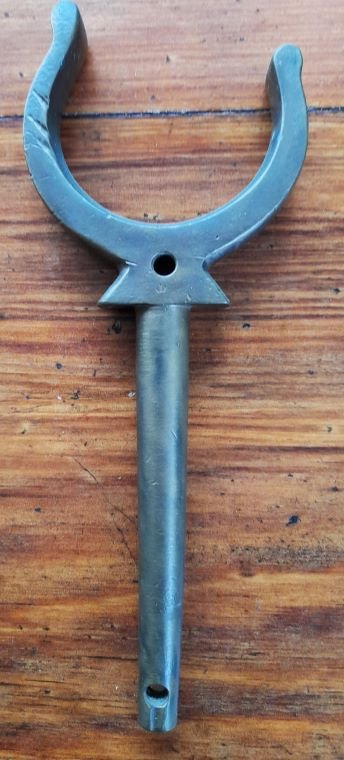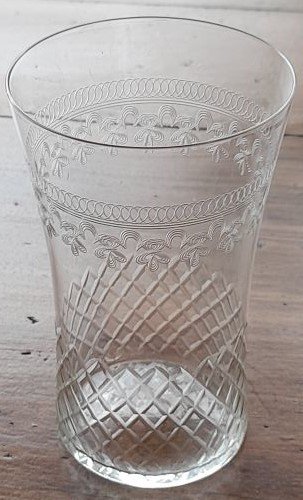Relics from the Hatsuyuki
The Hatsuyiki’s porthole
These portholes are works of art and are very special. Much angst went into retrieving them because, unlike merchant shipping where portholes are bolted on, these have 14 rivets to the hull.
Porthole from the Haysuyuki
How to get them off? A lot of thought and patience.
Banging the ship’s hull around the porthole with a dead blow hammer made the initial corrosion flake off, exposing the new metal to the saltwater. Do this 3-4 times over the course of a year. Payday comes, when with a punch and hammer, the now corroded but smaller rivets pop out. You then have to go inside the ship with a fine prybar to break the sealing gasket away from the hull. Careful manoeuvring with a lift bag to give it neutral buoyancy gets it out of the ship and up to the surface.
Each porthole is individually numbered and bears the Imperial Japanese Navy insignia. They are heavy solid brass, but the deadlight which is cast iron has long corroded away.
A lot of trouble, but well worth the effort to retrieve.
I still admire and treasure them after nearly 50 years.
Table Lamp
Table lamp from the Hatsuyuki
I retrieved eight of these lamps in one very fortunate dive from the officers’ quarters. One went to each of the other six divers in our group that day. I must have been suffering from nitrogen narcosis or something!
I still have two which are restored to working order. They are heavy solid brass with a fluted glass shade.
Each bears the insignia of the IJN (Imperial Japanese Navy). Around the base is a brass maker’s plate.
The compass from the Hatsuyuki
This was found by my mate Ray Leddick, but ended up in my possession in a swap deal. It was found in the bridge area and unfortunately, severely damaged.
There’s a lot of Japanese writing around the rim that needs to be translated. Probably the maker’s details.
Calligraphy items
The uppermost item in the image above is a heavy brass paper weight of which there would have been a pair. In Japanese these are called ‘bunchin’. The item to the lower right is a water dropper, and in Japanese is called ‘suiteki’. These are meant to have water in them and by using a finger over one of the holes, water can be precisely measured out to mix with an inkstick on the inkstone (to the left) to form a liquid ink of the required consistency. This suiteki is ceramic. The inkstone is called ‘suzuri’.
Glassware and ceramics
Menuma is a town in Japan and pomade is a hair cream, so I assume it is a container of hair cream made in Menuma. The beautiful blue lettering contrasts the ceramic crazing. The small blue wine glass is severely cracked but fully intact. Remarkable considering the explosions and sinking that took it to the bottom of the ocean.
Medicinal Items
All of these items came from the ship’s infirmary. Who knows what medicines are inside the ampoules?
Name tag
Each individual on the ship would have had one of these tags made of wood, with their name on it. They would be mounted onto a large board. At a glance anyone would be able to see if a person was on board or ashore on leave, for instance. What is remarkable is that this piece of wood has survived all the years underwater. The wording is ‘kanji’ and translates to: “Left side of the boat, Hashimoto Hayatsumu”.
Thank you, Nobu and Fiona Watanabe, for your translations of this and other items.
Lifeboat Rowlock
A heavy brass rowlock. Numbered and stamped with the IJN anchor insignia.
Voicetube mouthpiece
This copper mouthpiece was found in the bridge area and would have been mounted onto a tube so that someone could verbally communicate with another crew member in another section of the ship. If only we could recapture what has been said via this mouthpiece over the years.
Drinking glass
Very finely engraved, this glass is so thin and delicate that you fear, just by holding it, that it may break.
Yet it too had been subject to the bombing and sinking of a ship and remains completely intact.
Who else has held this glass and where did it come from?









